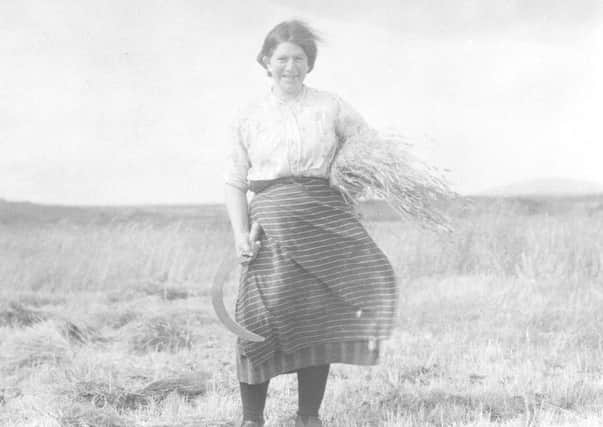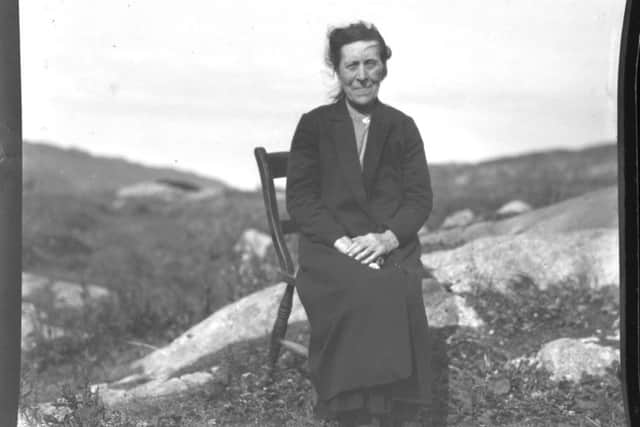Life on a Hebridean croft through the lens of a woman
This article contains affiliate links. We may earn a small commission on items purchased through this article, but that does not affect our editorial judgement.


The daily life of an early 20th-century Hebridean crofter was a hard existence.
Whilst the men worked on the peatland or were at sea fishing, the croft itself had to be tended to ensure the family’s daily sustenance.
Advertisement
Hide AdAdvertisement
Hide AdThe man may have been seen as the ‘head of the household’ but the woman was undeniably the ‘head of the hearth’.


However, her story has had to fight to achieve its rightful equal place in history.
Attitudes towards women varied from island to island in the Hebrides.
In the largely Catholic southernmost islands, whilst the man of the house was generally recognised as the breadwinner, it was understood that the household could not function efficiently without women. Their role became even more important during the two world wars, when many of the islands’ men left to join the armed forces.
Women, and the older children, had to take up all the activities traditionally undertaken by men as well as their own chores. Margaret herself said that she had ‘never seen both men and women do such hard physical work’.
When we examine collections of images depicting rural labour, the largest proportion will show men working. This is where the collection of Margaret Fay Shaw differs. There are as many images of women working as there are of men, possibly even more.
Could this have been a deliberate ploy of Margaret’s to help redress the balance of society’s attitudes towards women and work?
Margaret was certainly active at a pivotal point in history in terms of women’s rights, and we already know from studying her correspondence and writings that she did not believe in shying away from expressing her opinions. Perhaps the fact that she was American, and not bound by the ‘norms’ of Scottish ‘social commentary’, meant that she could express her empathy with her female companions.
Advertisement
Hide AdAdvertisement
Hide AdShe was perhaps even in awe of their resourcefulness and strength of character; she was certainly not averse to getting her hands dirty and doing some of the heavy jobs on the croft.
Whether subconsciously or not, Margaret used her unique position as a ‘proxy’ community resident to observe and document the lives of the Uist crofters in her photography. Living with two women gave her an insight into a Hebridean woman’s life. She had a knack for making her subjects relax and ‘open up’ to the camera, catching her friends as they went about their daily lives, with no requirement for formal posing.
In Margaret’s diaries and papers, she details the crofting year and the relentless round of activities and chores:
She wrote: “The spring work of the croft began in February, when seaweed, used as fertilizer, was cut with a saw-toothed sickle called a corran on the tidal islands of the loch at low water of a spring tide … then the year closes with all the harvest work done, the women wash and card the wool and start the spinning wheels. It is the season for the fireside and the ceilidh, the rough weather and the short days.”
Margaret captured the spirit and beauty of the Uist croftswomen with deftness, an awareness of posture and ‘line’, sometimes with humour and always with a sense of preserving the humility and gentleness of those she regarded as her family.
Margaret’s daily life was her ‘source’. Her aim to document an ‘authentic’ lifestyle shines through her images of traditional Uist croftswomen. She could relate to her female friends’ hard lives for she was living that hard life herself. However, she was not averse to taking herself off to the Lochboisdale Hotel every so often ‘for a hot bath and dinner’!
We already recognise the invaluable contribution that Margaret Fay Shaw made to the preservation of early 20th-century Hebridean culture. However, the contribution she made to the recognition and respect for the 1930s Uist croftswomen is ripe for further exploration.
Her images give us a delightful insight into a world that no longer exists.
- This article first appeared on the National Trust for Scotland website